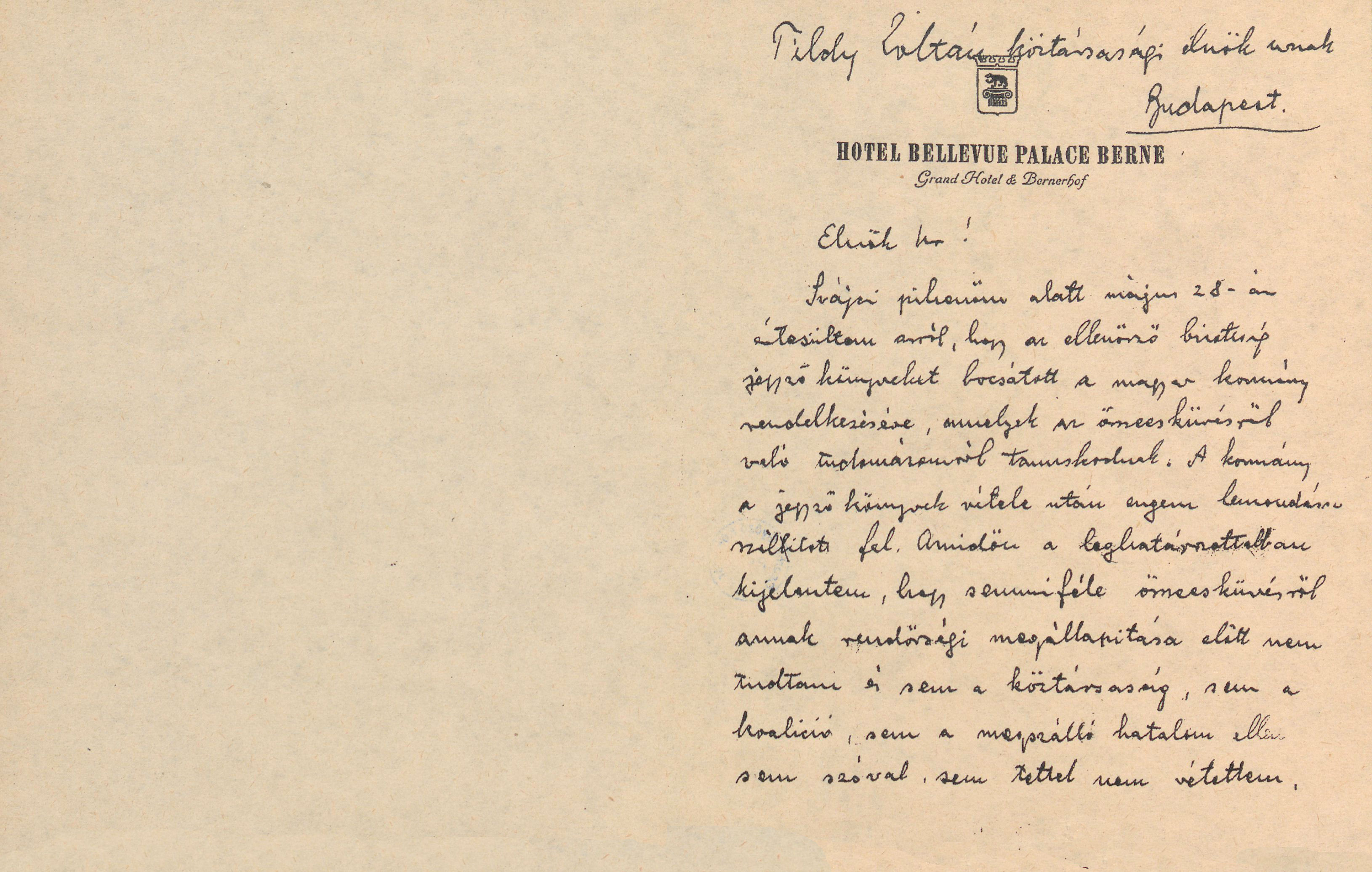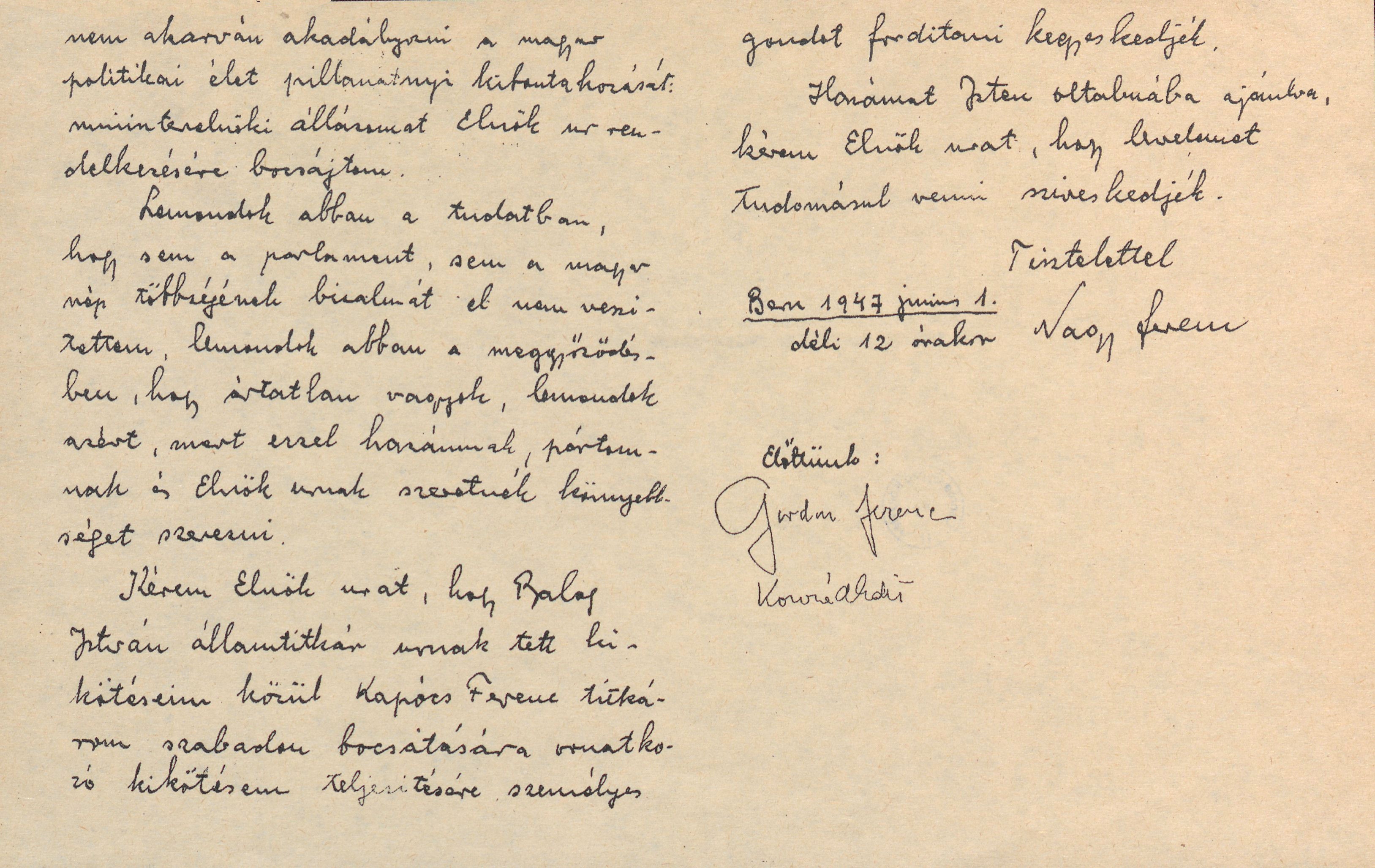PRIME MINISTER FERENC NAGY RESEARCH GROUP
The research group studies the life of Ferenc Nagy (1903–1979) who was Prime Minister of Hungary (1946–1947). The research group, founded in 2020, is led by Zoltán Ginelli and Zoltán Kovács.
︎ nfmk@nagyferenc.org
„He was the only smallholder farmer in Hungarian history who, as prime minister (...), could become the head of Hungary's executive power.”
Sándor Szakács
Ferenc Nagy speaks at the mass rally held on the occasion of the National Peasants' Days
at Heroes' Square, September 8, 1946.
Europeana / Hungarian National Museum
at Heroes' Square, September 8, 1946.
Europeana / Hungarian National Museum
WHO WAS HE?
Ferenc Nagy (1903–1979) was a smallholder politician, member of parliament, prime minister, and president of the Independent Peasant and Civic Party. He came from a small peasant family of Reformed faith, and his parents farmed 15 cadastral acres (8.63 hectares) of land in Bisse. Ferenc Nagy completed six years of elementary school. He worked on the family estate. As an only child, he had to work hard on the land from the age of 10 while his father fought on the front lines of World War I. He educated himself, wrote, and cultivated his mind. The peasant boy eventually became a respected smallholder politician and the first prime minister of the Second Hungarian Republic.Ferenc Nagy
He married in 1924 and had five children: two sons (Ferenc and László) and his eldest daughter (Julianna) were born in Hungary, while his two younger daughters (Zsuzsanna and Zsófia) were born in the United States. Zsuzsanna and Zsófia are still alive today.

Portrait of Nagy Ferenc
"In terms of ownership, workers must be brought closer to other factors of production. Thus, land must be given to the working people, and workers must be given greater influence over their own productive areas. Economic democracy must be created."
Ferenc Nagy
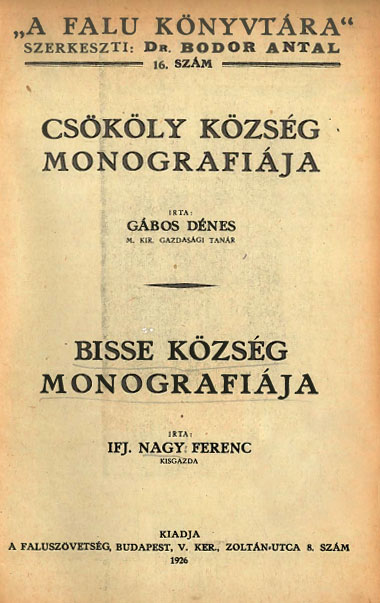


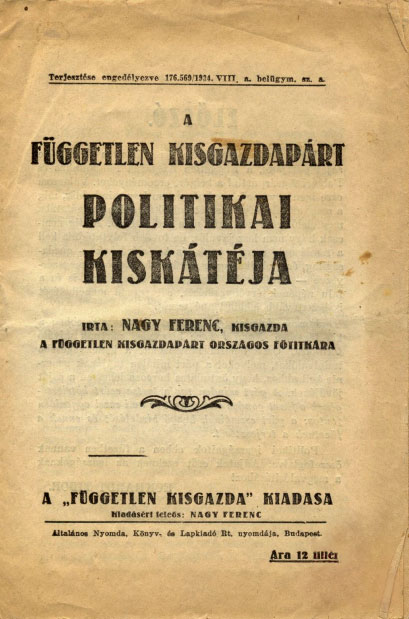


A peasant boy becoming prime minister
Ferenc Nagy began writing for various newspapers at a very young age, starting in the 1920s. He acted in village plays and wrote the play Aranykalászok (Golden Ears of Corn). He was the county vice-president of the smallholders' movement founded by István Szabó in Nagyatád, Baranya County, and his political views were published in the county newspapers in Pécs. He gained national fame through the Pesti Hírlap newspaper.
He entered politics in the 1930s. Together with Zoltán Tildy, he organized the Independent Smallholders' Party, of which he was secretary-general between 1930 and 1945. A strong smallholders' party camp was formed in Baranya for the 1939 elections. In 1941, he was one of the initiators of the Hungarian Peasant Association, serving as its president from 1941 to 1943. Throughout his political career in Hungary, he steadfastly represented the interests of rural smallholders and the destitute.
“The party believes that cooperation will be the future economic model for the people. (...) capitalist activity must be abolished.”
Ferenc Nagy

Ferenc Nagy gives a speech at the Smallholders' Assembly in Székesfehérvár, 1946.

Magyar Hírlap, 1929
During the German occupation of Hungary, he was arrested by the Gestapo in 1944 and imprisoned from April 12 to October 10. After his release, he was forced into hiding when the Arrow Cross Party seized power. Despite his political persecution, he opposed the collective guilt and deportation of Germans from the outset.
The fruits of his political work between the two world wars truly ripened after the war. In early 1945, he began reorganizing the Hungarian Peasant Union and the Independent Smallholders' Party. Between 1945 and 1946, he was briefly Minister of Reconstruction, President of the National Assembly, and a member of the National Council, as well as President of the World Federation of Hungarians. As István Csicsery-Rónay wrote, "In 1945, a charismatic leader of great stature entered the stage of Hungarian history."1
As prime minister
In the turbulent, reconstruction-driven spirit of the brief democratic period following World War II, the Second Hungarian Republic was able to embark on the long-awaited path of social revolution. The 1945 democratic elections brought a landslide 57% victory for the Independent Smallholders' Party, which gave it enormous political authority to implement urgent social reforms. Instead of Zoltán Tildy, who was elected president of the republic on February 4, 1946, Ferenc Nagy was ultimately appointed prime minister of Hungary and formed a new government. The program of the Independent Smallholders' Party could finally be implemented.
“The meeting with Stalin lasted two hours, and we left with the impression that we had already achieved results in the economic sphere...”
Ferenc Nagy
Ferenc Nagy's government had to rebuild a ruined, starving country that was also suffering from diplomatic instability and war reparations. To curb post-war hyperinflation, his government replaced the devalued pengő with the forint, which is still in use today, and signed the Paris Peace Treaties. Seeking foreign policy consolidation, he negotiated with both the US and the Soviet Union and repatriated Hungary's gold and silver reserves. The progressive, urban-rural administrative reform of smallholders was prepared by Ferenc Erdei and István Bibó.
Forced resignation
However, he was only able to hold the position of prime minister for 16 months. Following the show trials provoked by the communist deputy prime minister, Mátyás Rákosi, more and more representatives were expelled from the Smallholders' Party. Béla Kovács, a Smallholders Party representative, was taken to the Soviet Union on trumped-up charges. Ferenc Nagy was blackmailed by communists supported by the Soviet Union (and the Allied Control Commission) with his son László while on vacation in Switzerland, and was forced to resign on June 1, 1947. He was eventually expelled from the Smallholders' Party, and after the communists had fragmented the party using "salami tactics," Lajos Dinnyés formed a government.

Ferenc Nagy signed his resignation statement on the hood of a car in Buchs, at the Swiss border crossing.
References
1) Csicsery-Rónay István (2003): Nagy Ferenc. Csillagos Órák - Sorsfordító Magyarok (Kötelmúltunk közelről) XIV–XV. Budapest: Occidental Press.
1) Csicsery-Rónay István (2003): Nagy Ferenc. Csillagos Órák - Sorsfordító Magyarok (Kötelmúltunk közelről) XIV–XV. Budapest: Occidental Press.
RESEARCH
GROUP
“Something like this could obviously be sold in America too – until we can do something smarter than 'selling parsley'.
With love, István Pap”
Photo from István Pap to Ferenc Nagy, sent from Scheveningen (The Hague, Netherlands) to Herndon on July 16, 1948. Columbia University, Rare Book and Manuscript Library, Bakhmeteff Archives.
WHO ARE WE?
The Ferenc Nagy Prime Minister Research Group was established in 2020 under the leadership of Zoltán Ginelli, researcher, geographer, and global historian, and Zoltán Kovács, journalist and media expert. The Research Group began its work in collaboration with the Győző Csorba Library in Pécs, but now operates independently. Kovács had already initiated the creation of a Ferenc Nagy chamber exhibition in the library's Local History Collection in 2013. The researchers were brought together by chance, in addition to their shared commitment: Kovács' team and Ginelli began researching the documents preserved at Columbia University at the same time in 2019.
Zoltán Kovács is making a film about Ferenc Nagy and is preparing plans for the preservation of historical monuments, tourism, and rural development in Bisse, the birthplace of the smallholder prime minister. As a researcher, Zoltán Ginelli is studying Ferenc Nagy's activities in exile and in foreign policy, as well as digitizing his legacy. His main research topic is the role of Ferenc Nagy and the Hungarian anti-communist émigré community in shaping the political discourse on "Soviet colonization" in connection with Afro-Asian decolonization. The aim of the research group is to make the life story of Ferenc Nagy known to both domestic and international audiences.
Research Group
The Ferenc Nagy Prime Minister Research Group was established in 2020 under the leadership of Zoltán Ginelli, researcher, geographer, and global historian, and Zoltán Kovács, journalist and media expert. The Research Group began its work in collaboration with the Győző Csorba Library in Pécs, but now operates independently. Kovács had already initiated the creation of a Ferenc Nagy chamber exhibition in the library's Local History Collection in 2013. The researchers were brought together by chance, in addition to their shared commitment: Kovács' team and Ginelli began researching the documents preserved at Columbia University at the same time in 2019.
Zoltán Kovács is making a film about Ferenc Nagy and is preparing plans for the preservation of historical monuments, tourism, and rural development in Bisse, the birthplace of the smallholder prime minister. As a researcher, Zoltán Ginelli is studying Ferenc Nagy's activities in exile and in foreign policy, as well as digitizing his legacy. His main research topic is the role of Ferenc Nagy and the Hungarian anti-communist émigré community in shaping the political discourse on "Soviet colonization" in connection with Afro-Asian decolonization. The aim of the research group is to make the life story of Ferenc Nagy known to both domestic and international audiences.

Zoltán Kovács
JournalistMedia Expert
“I have been involved in the Hungarian media for almost four decades: newspapers, radio, and television, and in the last two decades, internet-based digital content provision and social media. During this time, I have conducted thousands of interviews and learned about countless life stories. The adaptation of Ferenc Nagy's cinematic life story is extremely timely."
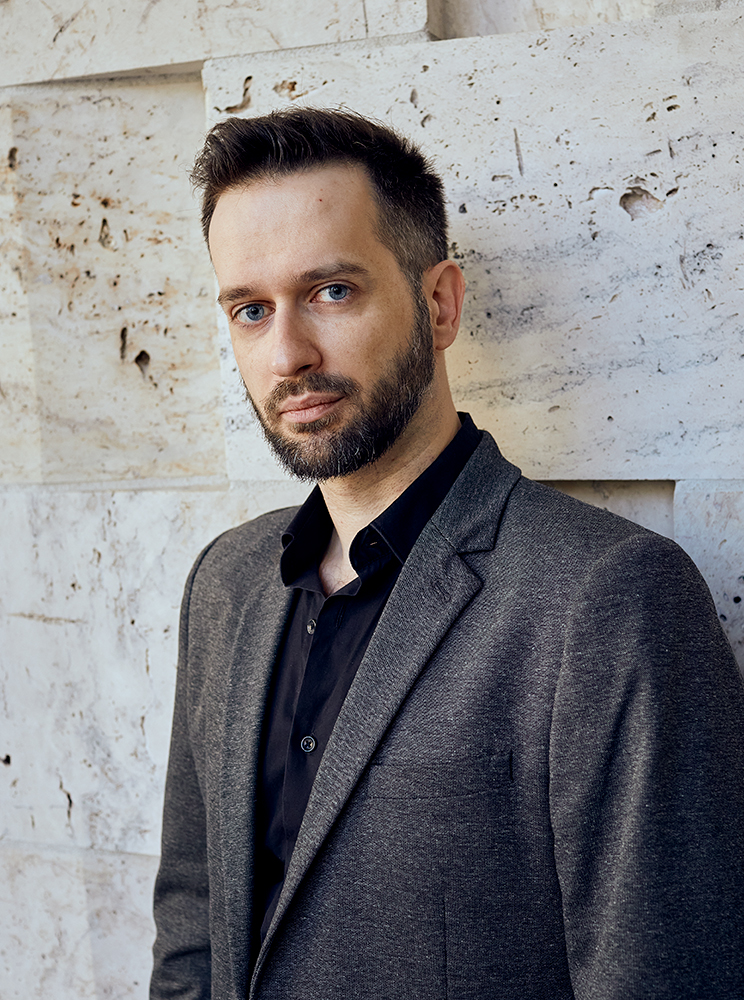
Zoltán Ginelli
GeographerGlobal Historian
“I have been researching the history of Hungary’s global network of relations for a decade. I have worked on numerous international research projects and taught at several universities, colleges, and schools.
In 2019, I began working on Ferenc Nagy in the international research project Socialism Goes Global. I am writing a co-authored book, which will include his diplomatic activities in Afro-Asia, to be published by Cambridge University Press. I am convinced that to document the life story of our former prime minister is of collective national interest.”
Photo: Gergő Pejkó
gergopejko.com

Zoltán Kiss
Librarian
“I am a librarian in Pécs with an interest in historical topics. My research into the lives of two intellectuals from Baranya County (Kázmér Horváth and Gizella Dénes) led me to Ferenc Nagy, a native of Bisse. All three were small farmers whose lives were affected by the communist regime that came into being under the shadow of the Soviet Union. I am researching the life of Ferenc Nagy up until his emigration in 1947.”

Dr. Imre Kerekes
Historian
“As a historian, I have been involved in transport history, the history of the University of Pécs, and compiling bibliographies. Within the research group, I have primarily worked on exploring the published writings, communications, and domestic political activities of Ferenc Nagy.”
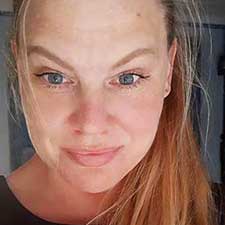
Eszter Kőhidi
Librarian
“I have been working as a librarian since 2004, first at Forum Hungaricum in 2017 and then at the Győző Csorba Library. I mapped out the American family members of Ferenc Nagy and compiled a family tree, searched for photos and documents, and even leafed through several years of the Hungarian Gazette looking for legislation affecting the prime minister and his descendants.”
RESEARCH
“I resign in the knowledge that I have not lost the trust of either Parliament or the majority of the Hungarian people. I resign in the conviction that I am innocent. I resign because I want to make things easier for my country, my party, and the President.”
Ferenc Nagy's letter of resignation from Switzerland, Bern, June 1, 1947.
WHAT DO WE DO?
Our research group conducts a wide range of research activities. The most important basis for this is the Prime Minister's personal archive, which was donated to Columbia University in New York by his son, László Nagy, and is currently housed in the Bakhmeteff Archives of the Rare Book and Manuscript Library at the university. Ferenc Nagy's surviving daughters gave us permission to digitize the entire archive. This priceless collection contains 21,500 items and at least 200,000 pages of documents (personal papers, correspondence, manuscripts, newspapers, etc.), as well as photographs and audio recordings. A significant portion of the material was digitized by Zoltán Ginelli.
Research
Our research group conducts a wide range of research activities. The most important basis for this is the Prime Minister's personal archive, which was donated to Columbia University in New York by his son, László Nagy, and is currently housed in the Bakhmeteff Archives of the Rare Book and Manuscript Library at the university. Ferenc Nagy's surviving daughters gave us permission to digitize the entire archive. This priceless collection contains 21,500 items and at least 200,000 pages of documents (personal papers, correspondence, manuscripts, newspapers, etc.), as well as photographs and audio recordings. A significant portion of the material was digitized by Zoltán Ginelli.
The personal heritage is supplemented by additional materials from the Research Group: materials from Hungarian state and private collections, archival and local history documents, memoirs, interviews, as well as other manuscripts, speeches, and university lectures by Ferenc Nagy found in the US and other foreign locations, along with photo, video, and audio materials. Our goal is to create a searchable digital archive that can assist researchers in their work as a searchable, metadata-enriched multimedia database.
We also consider it important to promote the results of the Prime Minister's research. We publish our research in the media, at academic conferences, at commemorative events, and in publications.
We also consider it important to promote the results of the Prime Minister's research. We publish our research in the media, at academic conferences, at commemorative events, and in publications.
Pannon TV Pécs: Ismerős (2021.4.16.)
Slajchó Zénó editor, Viszti István & Tamás Gábor cameraman.
Site: Reformed church in Bisse (2021.3.24.)
Documents
Perhaps the most valuable material in the Research Group's collection is the documents, which remain almost completely untouched. A significant part of the collection consists of carefully preserved personal papers: Ferenc Nagy's personal documents, manuscripts, publications (books, journalistic articles, etc.), notebooks, notes, invitation letters, reports, and materials, reports, and press clippings prepared by his former colleagues (e.g., Mihály Hőgye, István Csicsery-Rónay, Ferenc Pishky). In addition to personal and family documents, his personal correspondence and secret reports (e.g., those written for the CIA), as well as his diplomatic letters and telegrams (e.g., his request to Nehru to save István Bibó's life) are particularly valuable. Also relevant are the Hungarian state security reports from the Kádár era, in which Ferenc Nagy was given the code name "Gazda" (Farmer).
Through digitization, the documents have been characterized (OCR) and organized into a database, making them searchable and facilitating research. One of our goals is to map Ferenc Nagy's correspondence network using a geographical and digital humanities approach.






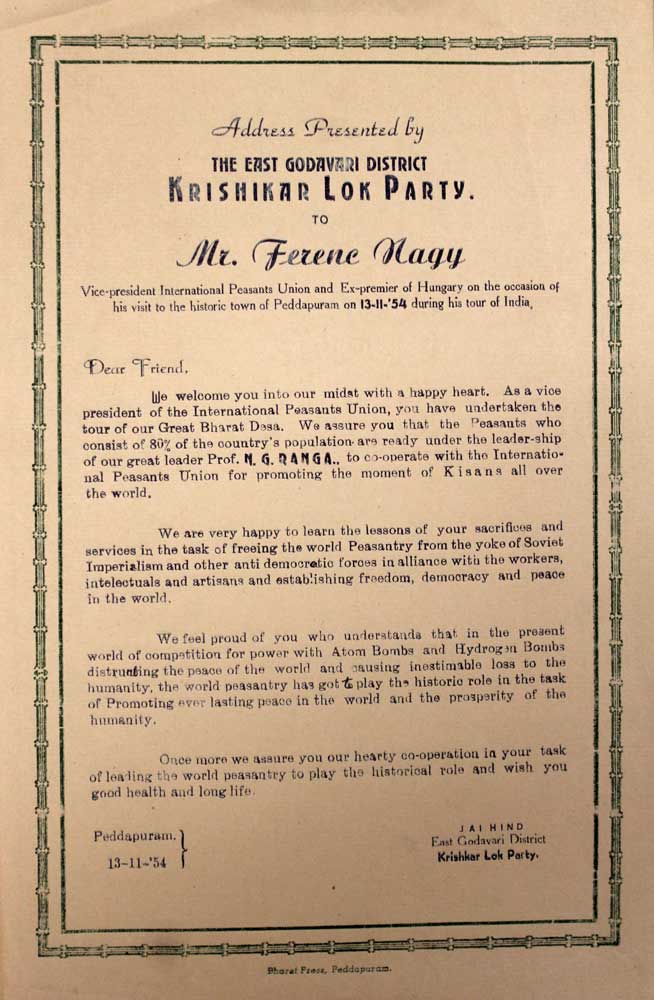

Columbia University, Rare Book and Manuscript Library, Bakhmeteff Archives.
FILM

“I myself am one of the five million Hungarian peasants crying beside the plow, and the terrible torment of the peasant's fate does not allow me to spend much time at my desk, because my bread is also there among the hard clods, and I must dig it out with both hands, with sweat, with backbreaking and life-shortening labor.”
Nagy Ferenc, Öt millió magyar a Golgotán, 1932
WHAT DO WE WORK ON?
Ferenc Nagy's adventurous, tragic, and dramatic life story is worthy of a movie. Despite its cinematic nature, it is still about a human destiny. It is about a man, a personality who is vividly portrayed and brought to life before us in documents, photos, audio recordings, and film footage.
Ferenc Nagy's life story could be told in many ways. The peasant boy from Bisse who became prime minister is a unique case of social mobility. He was a key figure in the popular movement between the two world wars and in the democratic reform attempts after World War II. He negotiated with Stalin and had connections with several American presidents. His forced but adventurous emigration only further globalized his life: he had to hold his own in the challenging arena of world politics and communicate with the world's leading figures.
We wish to commemorate this extraordinary and instructive career. Zoltán Kovács is working on a documentary film about Ferenc Nagy, with the help of our research group's extensive collection of material.
Film
Ferenc Nagy's adventurous, tragic, and dramatic life story is worthy of a movie. Despite its cinematic nature, it is still about a human destiny. It is about a man, a personality who is vividly portrayed and brought to life before us in documents, photos, audio recordings, and film footage.
Ferenc Nagy's life story could be told in many ways. The peasant boy from Bisse who became prime minister is a unique case of social mobility. He was a key figure in the popular movement between the two world wars and in the democratic reform attempts after World War II. He negotiated with Stalin and had connections with several American presidents. His forced but adventurous emigration only further globalized his life: he had to hold his own in the challenging arena of world politics and communicate with the world's leading figures.
We wish to commemorate this extraordinary and instructive career. Zoltán Kovács is working on a documentary film about Ferenc Nagy, with the help of our research group's extensive collection of material.
Nagy Ferenc (1903–1979) kisgazda miniszterelnök életútja, Part (48′)
Dorito Médiaügynökség, Pécs. Editor: Zoltán Kovács. Cameraman: Richárd Kovács.
Places featured in Part 2: Herndon (USA); Washington D.C. (USA); Rare Book and Manuscript Library at Columbia University, New York Cíty (USA). Sponsor: Hungarian National Cultural Fund.
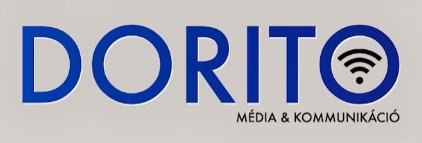
Filming in America
Members of our research team, Zoltán Kovács and Richárd Kovács, traveled to the United States in November 2019 to gather material for the film. They visited Ferenc Nagy's former family home in Herndon, where he lived and farmed with his wife and five children. They also paid their respects at the family grave.
Our film crew also visited Columbia University's archives to examine Ferenc Nagy's papers. That same year, Zoltán Ginelli traveled to the United States to begin researching and digitizing the papers.
We contacted and met with some of Nagy's living relatives, the Hungarian embassy, and other relevant American organizations. The first visits were soon followed by further trips...
We contacted and met with some of Nagy's living relatives, the Hungarian embassy, and other relevant American organizations. The first visits were soon followed by further trips...
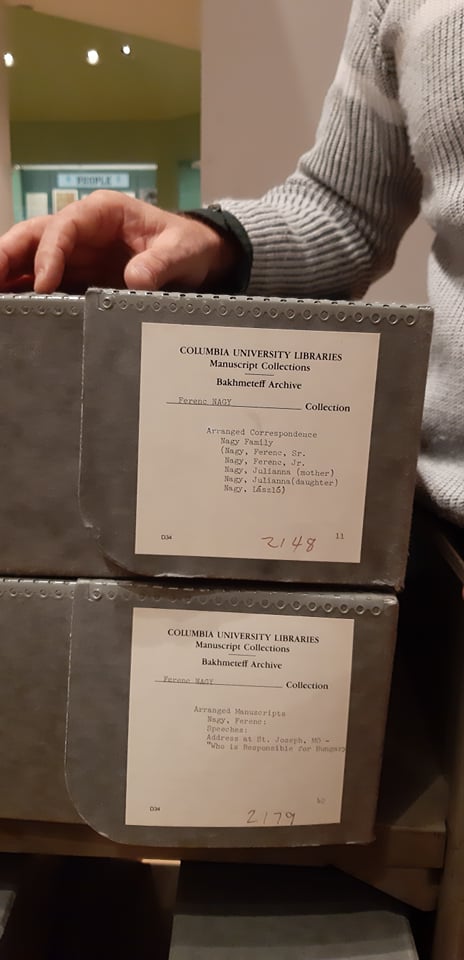
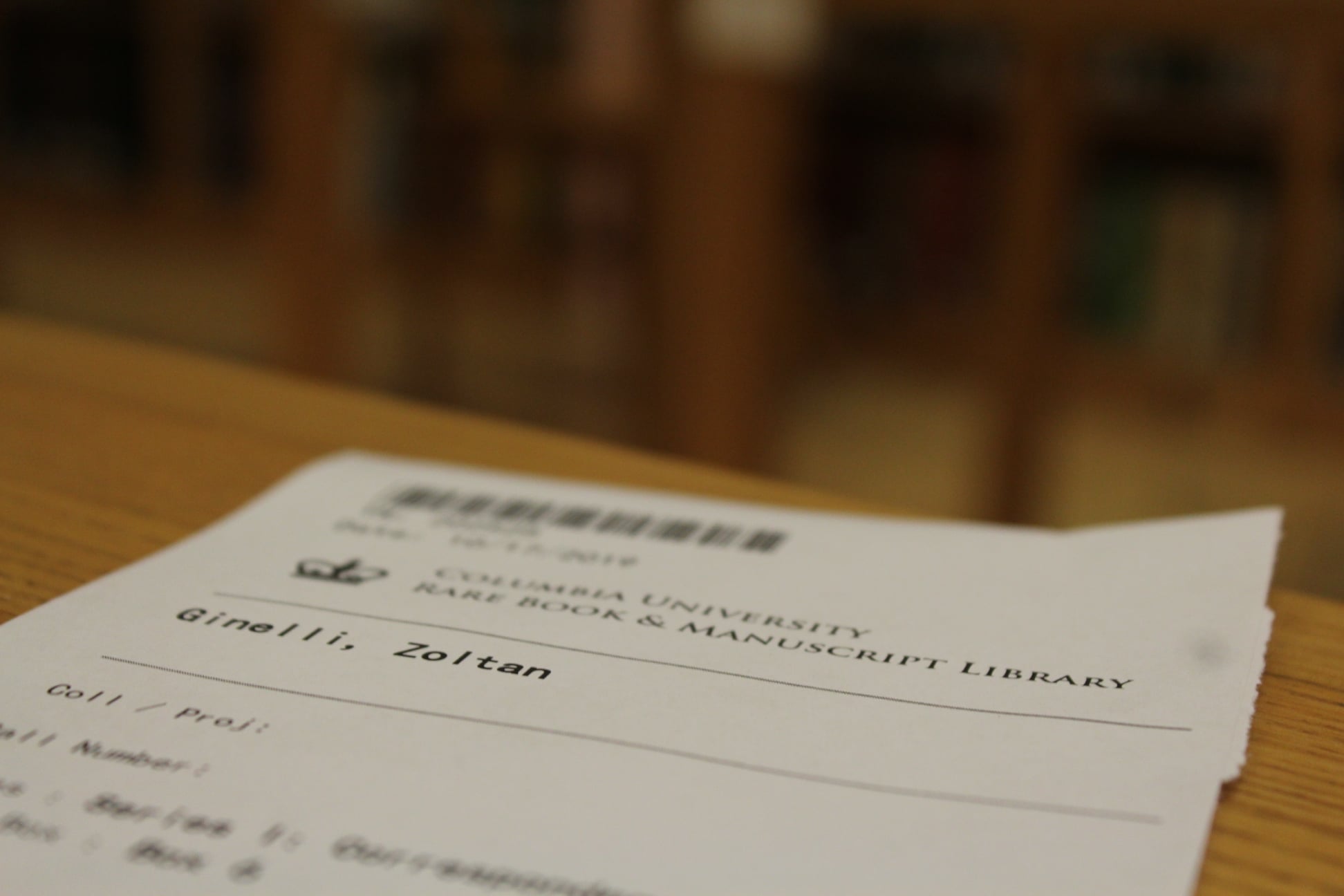



The Ferenc Nagy Papers in the Rare Book and Manuscript Library at Columbia University, and the house and grave of Ferenc Nagy in Herndon (USA).
“He was a man of the people and remained so even in exile. Herndon, the small town in Virginia, also considered him one of their own. The mayor issued an obituary and declared the day of his funeral a day of mourning. Flags flew at half-mast, and police officers dressed in ceremonial uniforms accompanied his coffin. Everyone knew the 'Prime Minister'...”
Sándor Kiss
Sándor Kiss
 The grave of Ferenc Nagy and his wife in the cemetery of Herndond. Photo: Richárd Kovács.
The grave of Ferenc Nagy and his wife in the cemetery of Herndond. Photo: Richárd Kovács.BISSE
“Dad told me that Bisse is a small farming village, originally inhabited by peasants who cultivated small plots of land. There was a schoolhouse in the village where all the children attended for the first six years of their education. This was where Mom and Dad met.”
The daughters of Ferenc Nagy, Susan and Sophie on Bisse
BACK TO THE ROOTS
The smallholder prime minister, forced to resign by the communists in 1947, was never able to return to his homeland. Ferenc Nagy spent the rest of his life in the United States, even though he had planned to return home in 1979, but death unexpectedly denied his request. His last dream could not come true.
Let's bring Ferenc Nagy back to Bisse! Today, it would be in the interest not only of Bisse but also of our country if a memorial house were established in his parents' home to honor the memory of the Hungarian prime minister. Our work supports this goal.
Our team is working to make this small village in Baranya County, the birthplace of the smallholder prime minister, a tourist destination. We are assisted in this by a tourist office and enthusiastic people who want to show tourists the hidden beauty and attractions of Baranya County. We welcome interested parties, acquaintances, friends, and relatives to Biss, even those who have never been to Hungary before. A small village can now connect two countries and mediate between worlds!
Bisse
The smallholder prime minister, forced to resign by the communists in 1947, was never able to return to his homeland. Ferenc Nagy spent the rest of his life in the United States, even though he had planned to return home in 1979, but death unexpectedly denied his request. His last dream could not come true.
Let's bring Ferenc Nagy back to Bisse! Today, it would be in the interest not only of Bisse but also of our country if a memorial house were established in his parents' home to honor the memory of the Hungarian prime minister. Our work supports this goal.
Our team is working to make this small village in Baranya County, the birthplace of the smallholder prime minister, a tourist destination. We are assisted in this by a tourist office and enthusiastic people who want to show tourists the hidden beauty and attractions of Baranya County. We welcome interested parties, acquaintances, friends, and relatives to Biss, even those who have never been to Hungary before. A small village can now connect two countries and mediate between worlds!
Pannon TV Pécs: News (2021.4.2.)
“The birthplace of Ferenc Nagy in Bisse, Baranya County. This is where the former smallholder prime minister was born and lived, before being forced to emigrate to the United States after the communist takeover. Now, based on an idea, his birthplace in Bisse could become a tourist attraction.”
Pannon TV Pécs
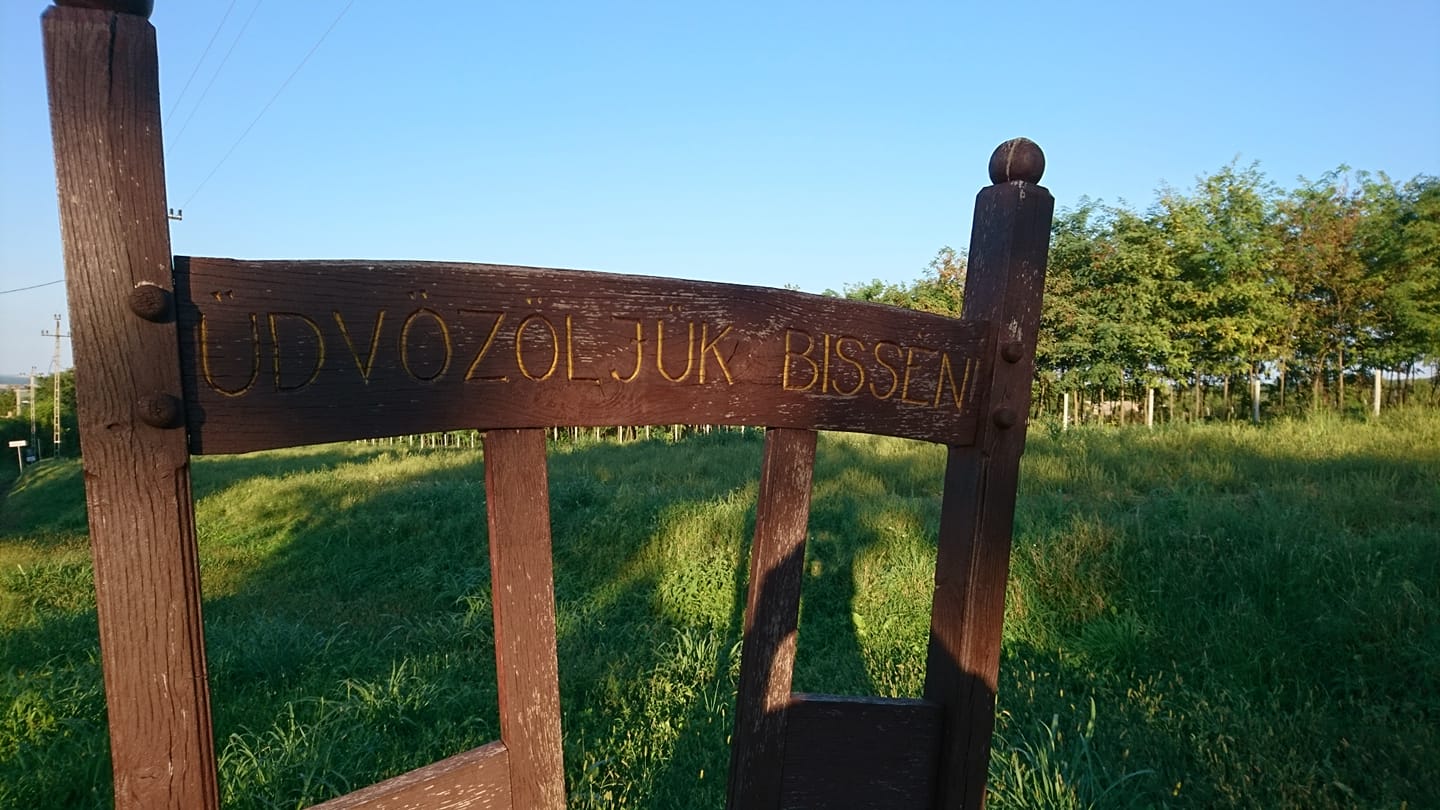
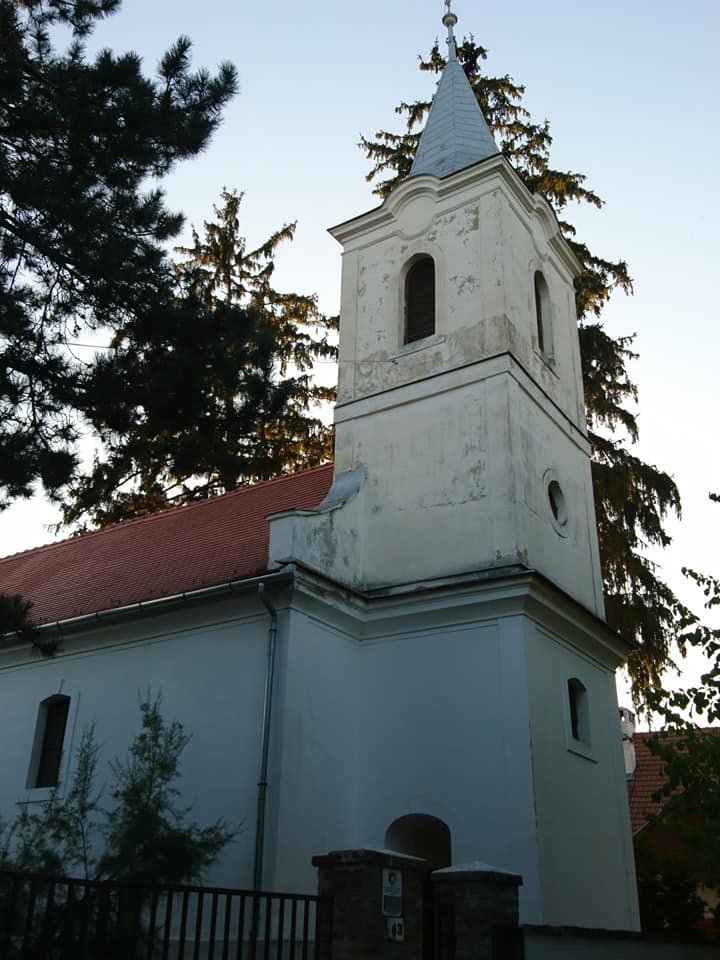
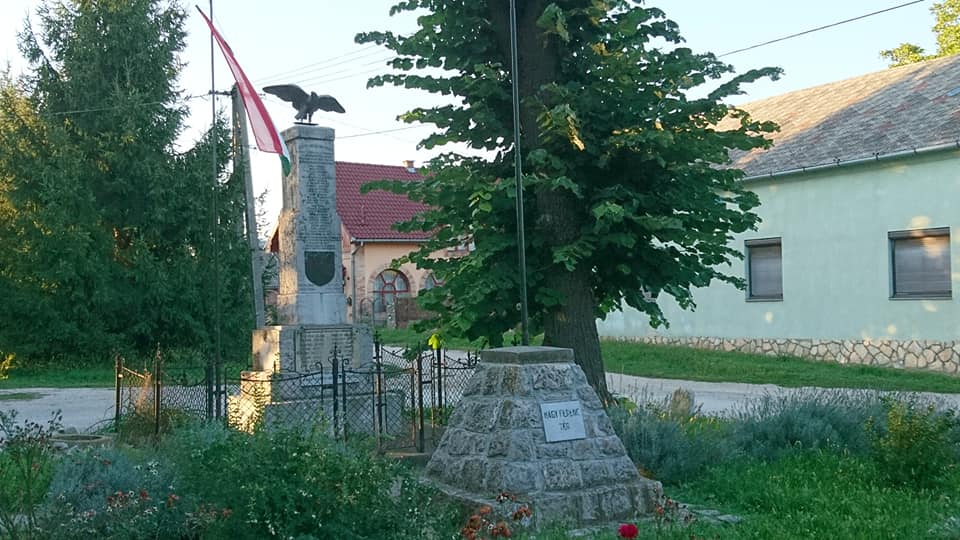
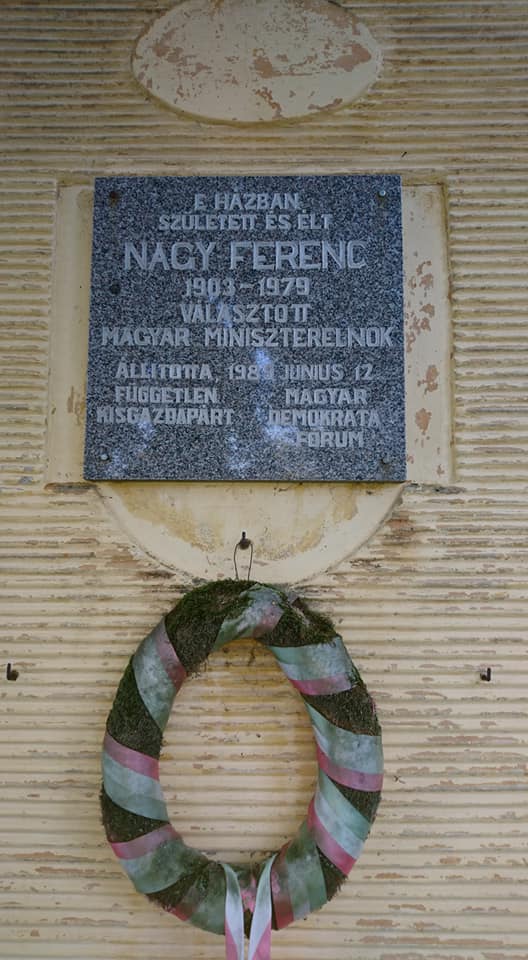

Ferenc Nagy Square in Bisse – Facebook page of Bisse village
“A worker may find himself in a foreign country through his international organizations. An educated person who has completed school may find himself there through his international education. But Hungarian peasants only left their homeland if they were taken away as prisoners of war or if they could not find enough food for their families on their own land. I thought that even slavery would be better than exile.”
Nagy Ferenc, In Emigration, 1947
